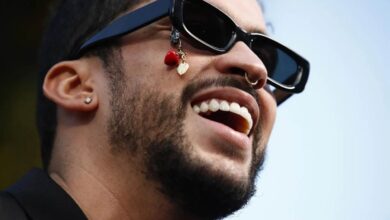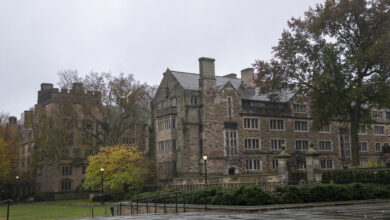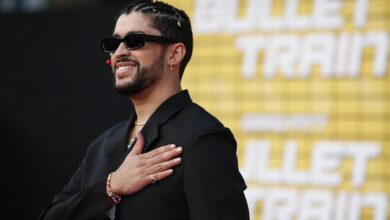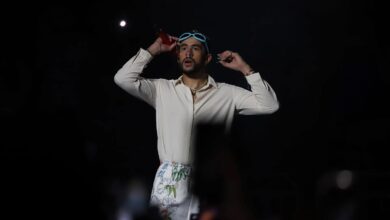Puerto Rican Fans Flock to Vega Baja for Bad Bunny Pilgrimage
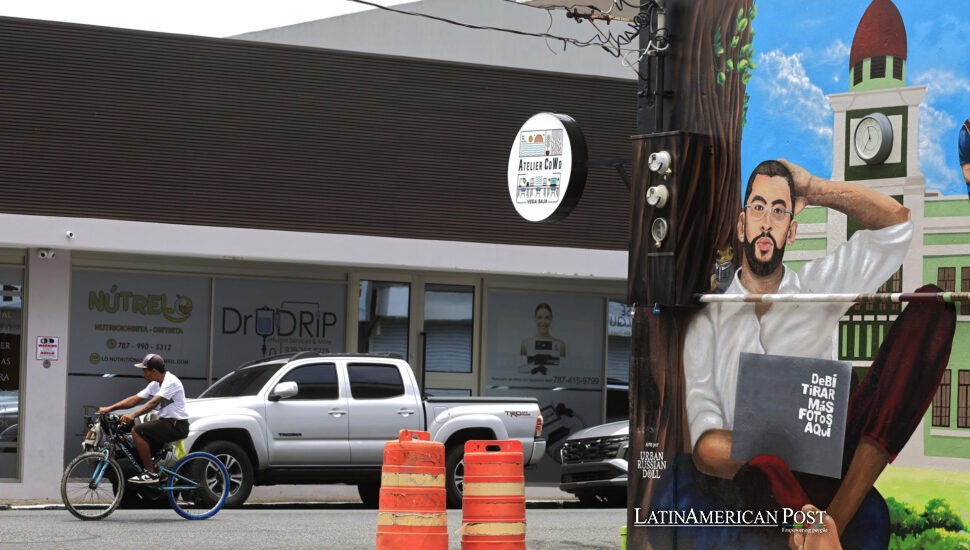
While San Juan dances through Bad Bunny’s electric stadium residency, Vega Baja—the singer’s sugarcane hometown—remains his quiet origin story, where parish bells, checkout lines, and a spiral notebook stitched together the rhythm now shaking coliseums worldwide.
Choir Robes, Classrooms, and the First Spark
Long before Benito Antonio Martínez Ocasio strode onto global stages as Bad Bunny, he shuffled down a church aisle in a white cassock, candles trembling in his small hands. In Vega Baja’s Parroquia Santísima Trinidad, he was just Benito—a soft-spoken altar boy whose mother taught catechism, and whose head stayed bowed even after Mass ended.
Miguel García, who now directs tourism for Vega Baja, remembers the boy clearly. “Faith surrounded him,” he said, gesturing toward the concrete bell tower now framed by souvenir stands. That very church, still ringing out its 6 A.M. chimes, has become a stop on the new “Conejo Route”—a pilgrimage for fans of the most unlikely global superstar.
A few curves away, in the forest-fringed barrio of Almirante, sits Benigno Fernández García Middle School. It was there, during a dusty talent show, that Benito gripped a battered mic and tested his voice before an audience. At Juan Quirindongo Morell High School, the teenage version of the future trap king rarely raised his voice—but his pen never rested. “He sat in this little chair, scribbling all through Spanish class,” said longtime caretaker Nydia Vázquez. “No one guessed how far those verses would travel.”
Ana Torres, his literature teacher, taught him the concepts of metaphor, rhythm, and the musicality of words. For Benito, language wasn’t just expression—it was architecture. He was already building something.
Scanners, SoundCloud, and a Cashier’s Chorus
After graduating in 2012, Benito enrolled in audiovisual communication classes and got a job bagging groceries at Econo Plaza, a supermarket off Highway 2. The sliding doors still carry a plaque: Donde todo comenzó—where it all began.
Adelissa Vélez, the HR manager who hired him, remembers the interview. “He answered softly, but looked me straight in the eye,” she told EFE. “You could see the discipline.” His co-workers teased him about his rotating haircuts and ever-present hoodie, but they also noticed he never stopped humming under his breath. And when his first songs appeared on SoundCloud in 2015? The stockroom speakers played them on loop.
Benito graduated from bagger to cashier quickly—serenading customers between scans of rice and yucca. His voice, his cadence, his playfulness—everything we now hear in “Tití Me Preguntó” or “Yo Perreo Sola”—was already echoing between aisles and over beeping scanners.
By 2016, when he scored his first big performance, Benito didn’t forget his roots. He gave out fifty free tickets to his former co-workers. “We screamed the lyrics back at him,” Vélez said. “We knew every word before the radio did.”
Vega Baja’s Beach Boy Makes Good
That breakout show came at the Vega Baja Gastronomic Festival, held at Playa Puerto Nuevo, a beach known for its limestone outcrops and Atlantic surf. Onstage, amid frying empanadas and sky-thumping bass, Benito transformed.
“He stepped up, and teenagers rushed the front like it was a revolution,” García recalled, laughing. “Even the parents chased after them.”
The beach would later serve as the backdrop for multiple Bad Bunny music videos, including “Estamos Bien” and “La Jumpa.” It wasn’t just scenery—it was biography. That coastal stretch had fed his imagery since childhood.
As his stardom rocketed—“Soy Peor” climbed the charts, Un Verano Sin Ti flooded headphones—Vega Baja began documenting its pride. A mural downtown, painted by Urban Russian Doll, features Bad Bunny among Puerto Rican legends: Iván “Pudge” Rodríguez, Vanessa García, and the endangered sapo concho. The city, once known for citrus groves and sugarcane, rebranded itself “La Ciudad del Melao-Melao”—syrupy sweet, just like the boy who stayed sweet even after global fame.
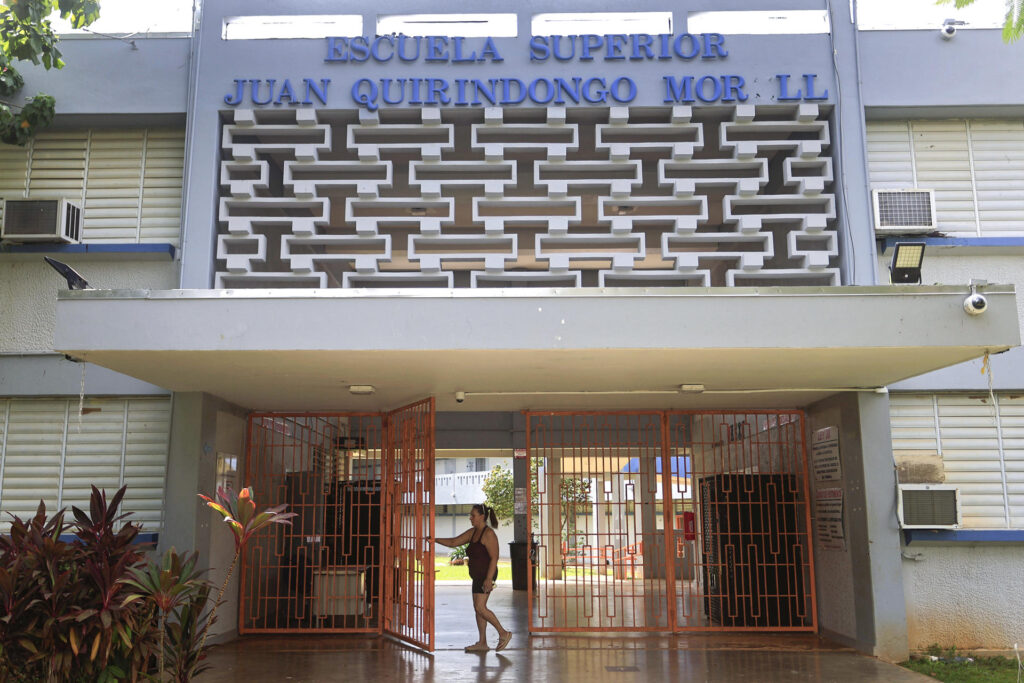
Stadium Lights and Aisle Echoes
His latest homecoming—the 15-night “No Me Quiero Ir De Aquí” residency—has turned San Juan into a continuous block party. But each show begins with something quiet: archival footage of Vega Baja. The church. The classroom. The supermarket. Benito’s way of saying: You see the fireworks, but this is the fuse.
And back in Vega Baja, that fuse still glows. Tourists now join guided day trips retracing his teenage footsteps: the altar, the school desk, the car park where he once collected carts under the Caribbean sun. They end the journey at Playa Puerto Nuevo, where visitors are handed earbuds to replay the ocean breeze layered with trap beats and hometown ambition.
Former teachers keep relics close. Nydia Vázquez still tends the desk where he drafted verses. HR boss Vélez has framed his job application. “I keep it near my calendar,” she said, “so I never forget where dreams begin.”
Outside the supermarket, an older man leaned on a cart last week and nodded toward the hills. “El chamaco se fue bien lejos,” he said. “Pero el corazón se le quedó aquí.” The kid went far—but left his heart right here.
Also Read: Hudson Nights Burn Bright as Sunset Salsa Turns New York into a Latin Dancefloor
And maybe that’s the quiet truth hidden in the blaring concerts and designer outfits. Perhaps the title “I Don’t Want to Leave Here” isn’t just nostalgia—it’s a vow. Because every time a verse echoes across a stadium, or a new hit blasts from a beach kiosk, Vega Baja hears it too. It’s a reminder that greatness can bloom between hymnbooks and shopping carts, and that even global icons carry a little melody from home tucked somewhere in their hoodie.

